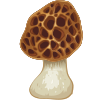

JOHNY
Members-
Posts
335 -
Joined
-
Last visited
Profile Information
-
Location
NorthWest Ontario
-
Interests
hunt fish garden cooking
Recent Profile Visitors
1,860 profile views
JOHNY's Achievements

Morchella Senior Member (3/5)
-

Pick Your Harvesting Grounds Carefully
JOHNY replied to ZUnit's topic in General Mushroom Discussion
Agree there are some places I would never harvest from. Old railway yards. Golf courses. Grave yards. Love Canal. Any land within a mile of a DuPont factory. But..it is hard not to harvest something like this at road side. There was six pounds of Pleurotus osteatus and the Dryad Saddle on a dead Elm stump on a highway, road side in Northwest Ontario. I briefly worried about exhaust fumes, rubber, road salt and decided that I am not going to live long enough to care (62 YO). The Oysters made delicious mushroom jerky and the Dryad was added to an Asian veg stir fry. -
Sure I will eat raw white buttons along with raw veggies for a Crudités appetizer plate I have never eaten raw Crimini but it should be fine since they are the same species as the white buttons. I have seen European Book recipes that include raw Porcini sliced into salads and other veg mixes. I would never do this because 1) European King Boletes are probably not the same species as what North Americans call Kings/Porcini. 2) The rare chance of finding a tiny white worm wiggling out of a raw Porcini slice into my salad is too disgusting to contemplate. I have no doubt I have eaten the white worms in some Boletes by accident but when they are fried hard and mixed into pasta or rice you can't see them.
-
Dryad Saddle. Too old to eat this year. It will be tough, chewy and maybe bitter. Get there 2 weeks earlier next year and pick when younger for a decent meal
-

SCAM SUPPLIER
JOHNY replied to Robin growing mushrooms's topic in What Kind of Mushrooms are you Growing?
Sorry to hear this. The only Canadian company I have dealt with is Grow Mushrooms Canada. They are based on Vancouver Island. Always had good service from them. -
A friend harvested Oyster mushrooms after putting spent spawn of a table top kit into an out door bed of Aspen wood chips and leave mulch. But it was not a huge harvest. My attempts with Pioppino and Chestnut Pholiota have all failed
-

Please, more help with identifying lyophyllum descates
JOHNY replied to Therese's topic in Identifying Mushrooms
Again, possibly Lyophyllum. This is a difficult species because there may be many morphologically similar species that can only be differentiated from each other by DNA testing. All the mushrooms that I have called Lyophyllum have been white or very faintly yellow to pale brown. The difference being how old they are and how wet the ground is. Yours show gills attached but with a wee notch at the attachment point. Mine have always been slightly decurrent (running down the stem but only a tiny bit). Kuo describes both variations on MushroomExpert.com If you have access to a microscope, seeing round spores would help to confirm. -
More than one species can grow from the same wood. There may be competition at the mycelia level but either one wins or several find a balance and co-exist. Inspect a very dead log in a wet forest and you might find many species on it. For edible mushrooms, I have seen Dryad Saddles growing side by side with Oyster mushrooms
-

Brown cluster mushrooms - Marasmius oreades?
JOHNY replied to Therese's topic in Identifying Mushrooms
Agree possibly Lyophyllum They grow every summer in a walking area in bush behind my house. But it took me three years of studying multiple websites, books, spore prints including microscopy before I was confident to try eating them. . Several toxic look-alikes but I think most of those are found in the Western Mountains See my Post on Lyophyllum from several years go. Ultimately I decided they were Lyophyllum when I saw spores were round under microscope view -
Hey Z. The Gas you had could be a personal reaction that most do not get. Lions Mane Hericium is a choice edible mushroom. But all mushrooms can produce some GI side effects in rare people and yet not be considered toxic for the majority.
-
Brown ring of the stem says Cortinarius. Potentially very toxic
-
Butter salt garlic shallots and top onto a seafood risotto or Spanish Saffron Rice (Paella) with fried red bell peppers, onions and a lot of garlic.
-
You lucky guy. They are delicious. Sort of a seafood and mushroom combined flavour profile
-
Curious. My experience and most sources say a pinkish spore print for blewits. Cortinarius is definitively brown If you had access to a microscope, the size and shape of spores might be more convincing.
-
It looks like a Blewit. But I always spore print a few before eating them. Although I see no ring on your specimen, it can be challenging to differentiate a Blewit from some Cortinarius species which are often GI toxic.
-

What kind of mushroom is this and is it edible?
JOHNY replied to Northernwisconsin99's topic in Identifying Mushrooms
Pic #2 is impressive. I've never seen so many of them in one area. I want to call them Slippery Jacks, Suillus luteus, but the lightly concave cap does not seem right. Normally,S. luteus that I find all have a symmetrical convex/dome-like cap Perhaps because these are older?


